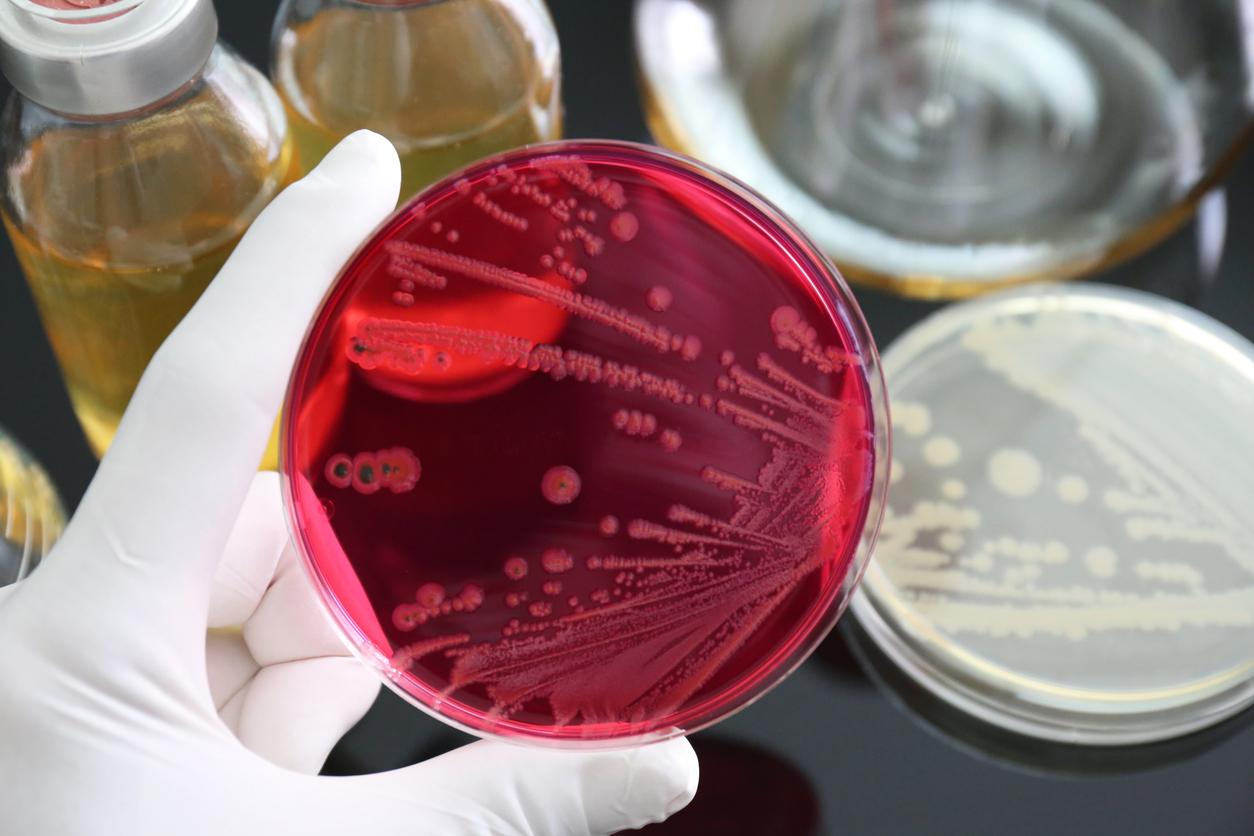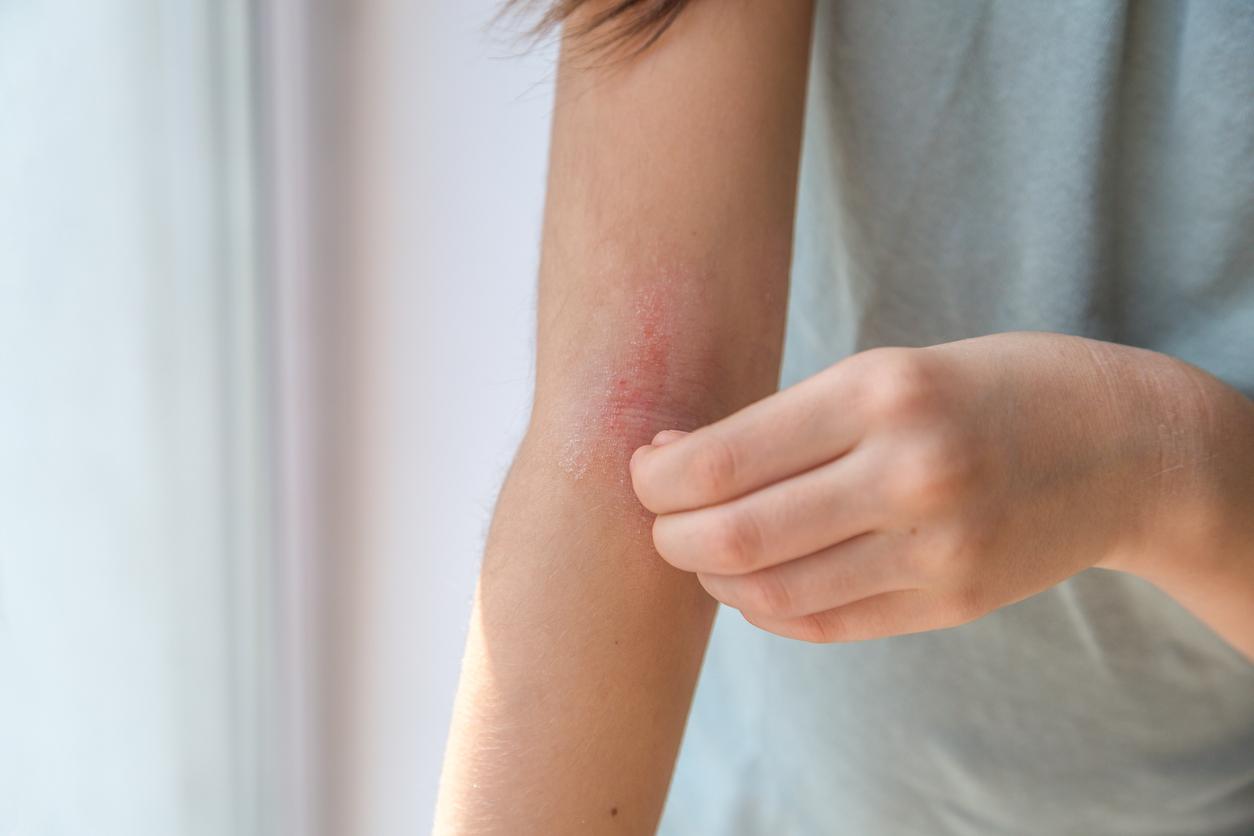Contact eczema is triggered by an allergen, but then always comes back in the same place, even after recovery. Researchers have found out why.

Redness, severe itching, oozing and scabs: many French people are familiar with contact eczema, or contact dermatitis, inflammation of the skin caused by an allergic reaction. She would affect 2 to 6% of the population. Two phases are involved in the disease: the first, called sensitization to the allergenic substance, can last from a few days to a few years. The allergen is then “stored” by certain lymphocytes, and no symptoms appear at this time.
Then, during the second phase, when this allergen comes into contact with the skin again, the immune system recognizes it. The symptoms of contact eczema then appear within one to two days, and the inflammation of the upper layers of the skin persists as long as it remains in contact with the allergenic substance. But the researchers then wondered why these patches of eczema reappear in the same places, each time the skin comes into contact with the allergen, even when the lesion is healed?
Immune cells responsible for symptoms
To understand the mechanism that causes eczema to persist, a team of scientists bringing together Inserm, the University Claude Bernard Lyon 1, the Ecole Normale Supérieure de Lyon and the CNRS, within the International Center for Research in Infectiology (CIRI ), conducted research in mice. Their results were published in the JJournal of Allergy and Clinical Immunology.
The researchers explain that the allergens, after contact, persist in the skin for several weeks. But that’s not all: they also discovered immune cells called resident memory T lymphocytes, which remain in the body for several years. It is these immune cells that then reactivate the symptoms of contact eczema upon further contact with the allergen, even if the last lesions have healed. Indeed, scientists have discovered a cluster of resident memory T cells (MRTs) in eczema plaques.
Thanks to this research, we now know that these TRMs are involved in the local reappearance of eczema plaques, as well as in the chronic form of the disease. This could later make it possible to develop new therapeutic approaches that would prevent the reactivation of these TRMs.















